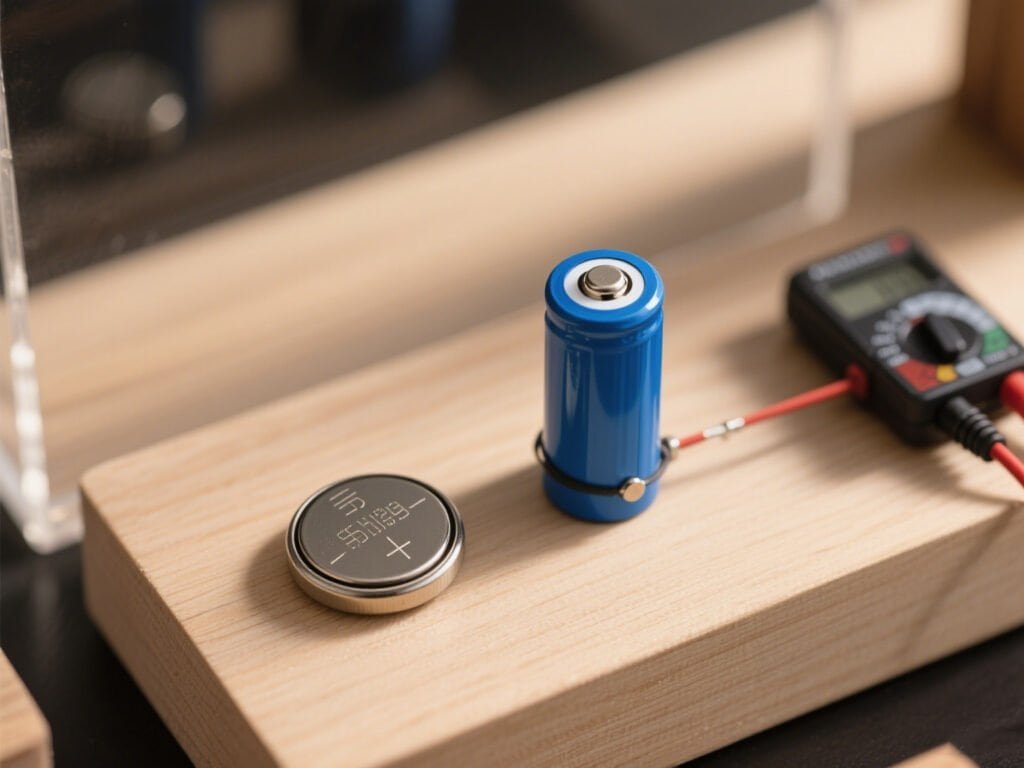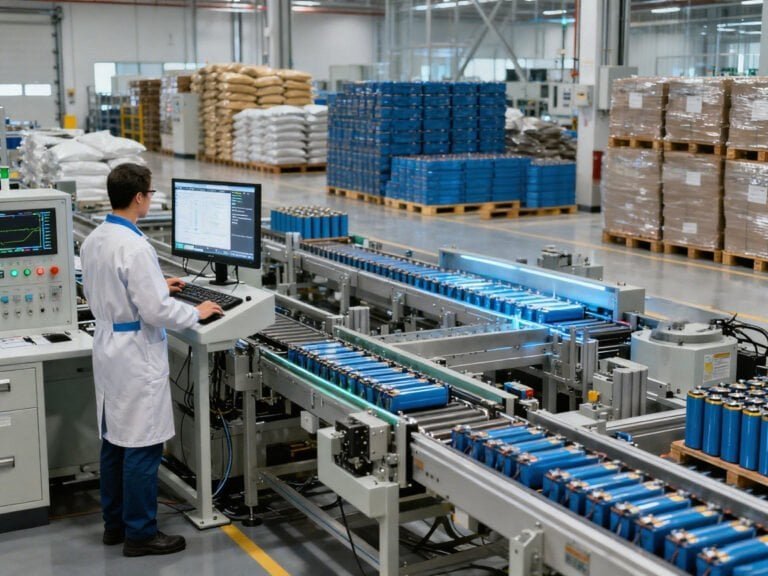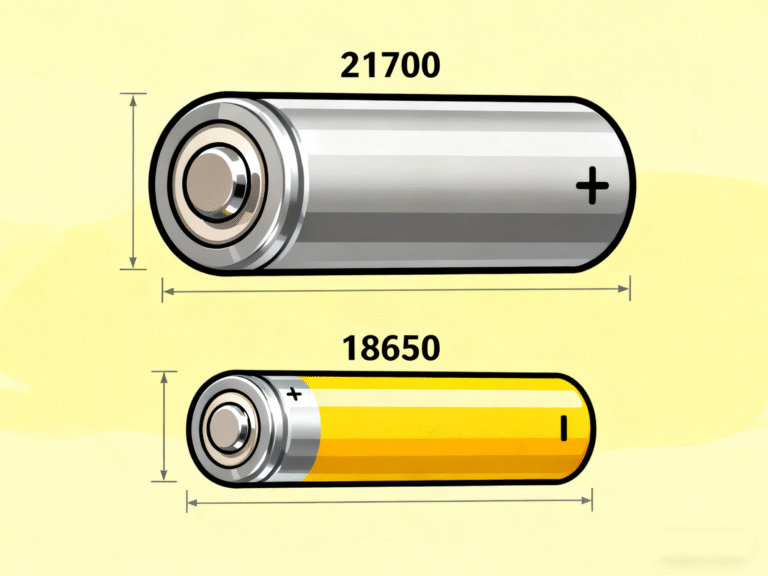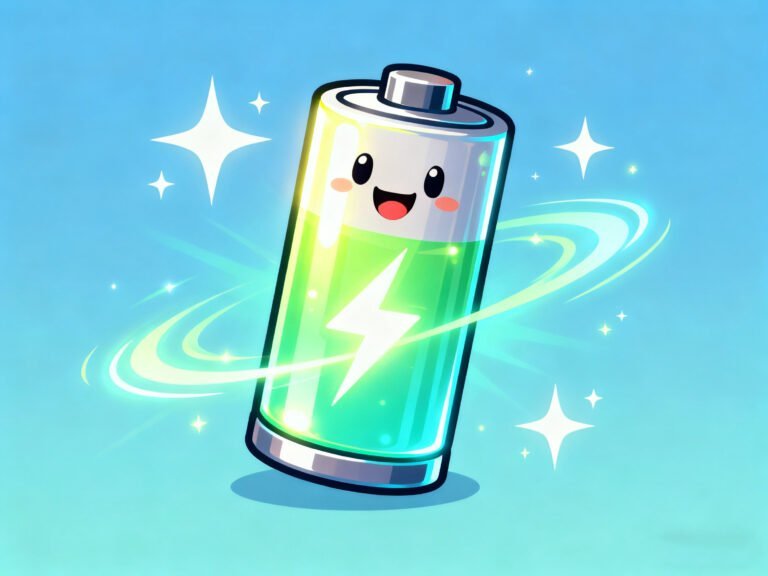As the world becomes increasingly reliant on portable electronics, electric vehicles, and renewable energy systems, the choice of battery type is more important than ever. Among the many battery technologies available today, two major types often stand out in discussions: regular batteries (typically referring to alkaline or lead-acid batteries) and lithium batteries. While they may serve similar purposes, the differences between them are profound and can significantly affect performance, cost-efficiency, and sustainability.
In this comprehensive guide, we explore the fundamental differences between regular batteries and lithium batteries—from chemistry and lifespan to applications and environmental impact—to help users, manufacturers, and decision-makers make more informed choices.

1. What Is a Regular Battery?
The term regular battery is often used to describe common battery types such as alkaline batteries and lead-acid batteries, both of which have been in use for decades.
1.1 Alkaline Batteries
Alkaline batteries are disposable and widely used in consumer electronics like remote controls, toys, flashlights, and clocks. They are known for their low cost and ease of access.
-
Chemistry: Zinc (Zn) and Manganese Dioxide (MnO₂)
-
Voltage: Typically 1.5 volts per cell
-
Rechargeability: Not rechargeable (though some rechargeable alkaline variants exist)
1.2 Lead-Acid Batteries
Lead-acid batteries are primarily used in automotive applications and backup power systems due to their ability to deliver high surge currents.
-
Chemistry: Lead dioxide (PbO₂) and sponge lead (Pb) in sulfuric acid (H₂SO₄)
-
Voltage: 2 volts per cell
-
Rechargeability: Rechargeable
While lead-acid batteries are heavier and less energy-dense, they are cost-effective and relatively easy to recycle.
2. What Is a Lithium Battery?
Lithium batteries represent a newer, more advanced form of energy storage. There are two main types:
2.1 Primary Lithium Batteries
These are non-rechargeable and used in devices such as watches, calculators, and medical instruments.
2.2 Lithium-ion (Li-ion) and Lithium Iron Phosphate (LiFePO₄) Batteries
These are rechargeable and dominate applications like electric vehicles (EVs), e-bikes, drones, smartphones, laptops, and energy storage systems.
-
Chemistry: Varies by type (e.g., LiCoO₂, LiFePO₄, NMC, etc.)
-
Voltage: Typically 3.2 to 3.7 volts per cell
-
Rechargeability: Rechargeable with high cycle life
3. Key Differences Between Regular and Lithium Batteries
Let’s explore the fundamental differences between regular (alkaline/lead-acid) and lithium batteries in several core aspects.
3.1 Energy Density
-
Lithium batteries have much higher energy density, meaning they can store more energy in a smaller and lighter package.
-
Alkaline and lead-acid batteries have lower energy densities, making them heavier and bulkier for the same capacity.
Use Case: A lithium-ion battery pack can power an electric vehicle for hundreds of kilometers, while a lead-acid system of similar power would be excessively large and heavy.
3.2 Cycle Life
-
Lithium batteries can typically handle 1000 to 5000+ charge cycles, depending on chemistry and usage.
-
Lead-acid batteries average 300 to 500 cycles, and alkaline batteries are single-use.
Implication: Longer cycle life means fewer replacements and lower long-term costs.
3.3 Charging Time
-
Lithium batteries charge significantly faster, with some reaching 80% in less than an hour.
-
Lead-acid batteries require much longer charging times and need to be charged in phases to prevent damage.
3.4 Weight and Size
-
Lithium batteries offer lightweight and compact designs, ideal for portable and mobile applications.
-
Lead-acid batteries are heavier and bulkier due to their dense components.
In eBikes, drones, and portable tools, lithium batteries are the preferred choice for their weight advantage.
3.5 Voltage Output
-
Lithium-ion cells produce 3.7V, which is more than double the 1.5V of alkaline cells.
-
Fewer lithium cells are needed to reach a target voltage, simplifying design and reducing size.
3.6 Temperature Performance
-
Lithium batteries perform better in a wider temperature range, especially in cold climates.
-
Lead-acid and alkaline batteries suffer performance degradation in extreme temperatures.
3.7 Environmental Impact and Recycling
-
Lead-acid batteries have established recycling processes and are widely recycled, though they use hazardous materials.
-
Lithium batteries are less toxic, but recycling infrastructure is still developing globally.
3.8 Safety
-
Modern lithium batteries, particularly LiFePO₄, are designed with smart BMS (Battery Management Systems) to ensure thermal safety and prevent overcharging or overheating.
-
Lead-acid batteries can leak acid or emit hydrogen gas if not maintained properly.
4. Applications: Where Each Battery Excels
4.1 Alkaline Batteries
-
Remote controls
-
Toys
-
Wall clocks
-
Flashlights
4.2 Lead-Acid Batteries
-
Automotive starter batteries
-
Backup power systems (UPS)
-
Golf carts
-
Industrial machines
4.3 Lithium-ion Batteries
-
Smartphones, tablets, laptops
-
E-bikes and scooters
-
Drones
-
Portable power stations
-
Solar energy storage systems
-
Electric vehicles (EVs)
5. Cost Comparison
-
Initial Cost: Alkaline and lead-acid batteries are cheaper upfront.
-
Lifetime Cost: Lithium batteries offer better value over time due to their durability and efficiency.
Although lithium batteries have a higher initial cost, their longer lifespan and superior performance often make them more cost-effective in the long run—especially in business or high-use applications.
6. Industry Trends: Why Lithium Is Becoming the Standard
The global battery market is rapidly shifting toward lithium-based technologies. According to market forecasts, the lithium battery market is expected to reach USD 182.5 billion by 2030, driven by demand for electric mobility, green energy, and high-performance electronics.
FirstPower, a leading Chinese battery manufacturer, is among the companies driving this transformation. With over 12 years of experience, FirstPower specializes in lithium battery solutions for electric bicycles, golf carts, AGVs, robots, and more. Their advanced Down Tube Battery with smart BMS, reinforced housing, and enhanced waterproof features exemplifies how lithium technology continues to evolve.
7. Lithium Battery Innovations: Beyond Energy Storage
Today’s lithium batteries are more than just power sources—they are smart energy systems.
Smart BMS Systems
Modern lithium batteries, like those developed by FirstPower, incorporate intelligent Battery Management Systems that:
-
Monitor temperature, voltage, and current
-
Prevent overcharging and deep discharge
-
Enable Bluetooth diagnostics
-
Extend battery life
Integration with IoT and AI
Lithium batteries are now part of smart devices and connected ecosystems, providing real-time data and supporting predictive maintenance for industries like robotics, logistics, and electric transport.
8. Environmental Considerations and Sustainability
Sustainability is an important factor in modern battery development. While lithium mining and recycling are ongoing challenges, lithium batteries offer long-term ecological benefits:
-
Longer lifespan = fewer replacements
-
Lower energy waste = better efficiency
-
Non-toxic variants like LiFePO₄ are safer for the environment
Companies like FirstPower are investing in green manufacturing and recyclable designs to align with global sustainability goals.
Conclusion: Which Battery Is Right for You?
| Feature | Alkaline | Lead-Acid | Lithium |
|---|---|---|---|
| Rechargeable | ❌ | ✅ | ✅ |
| Energy Density | Low | Medium | High |
| Cycle Life | N/A | 300–500 | 1000–5000+ |
| Weight | Light | Heavy | Light |
| Charging Time | N/A | Slow | Fast |
| Eco-Friendly | Moderate | Poor (toxic lead) | Improving |
| Cost | Low upfront | Medium | Higher upfront, better lifetime value |
| Applications | Household devices | Cars, UPS | EVs, eBikes, electronics |
Choosing between regular and lithium batteries depends on your specific application, budget, and performance requirements. However, as technology advances and prices continue to drop, lithium batteries are rapidly becoming the standard across industries.
For businesses and individuals looking to upgrade their energy solutions, now is the time to embrace lithium power. Partnering with experienced manufacturers like Shenzhen First Power Energy Co., Ltd. ensures not only high-quality lithium batteries but also tailored solutions, global certifications, and responsive after-sales support.
About Shenzhen First Power Energy Co., Ltd.
Shenzhen First Power Energy Co., Ltd., known as First Power, is a high-tech enterprise specializing in lithium battery design and production. With over a decade of experience, First Power provides battery solutions for:
-
Electric bicycles (eBikes)
-
Golf carts
-
AGVs and robots
-
Energy storage systems
-
Custom OEM/ODM applications
Visit www.yizhanbattery.com to learn more about First Power’s lithium battery technologies, certifications, and global delivery capabilities.







